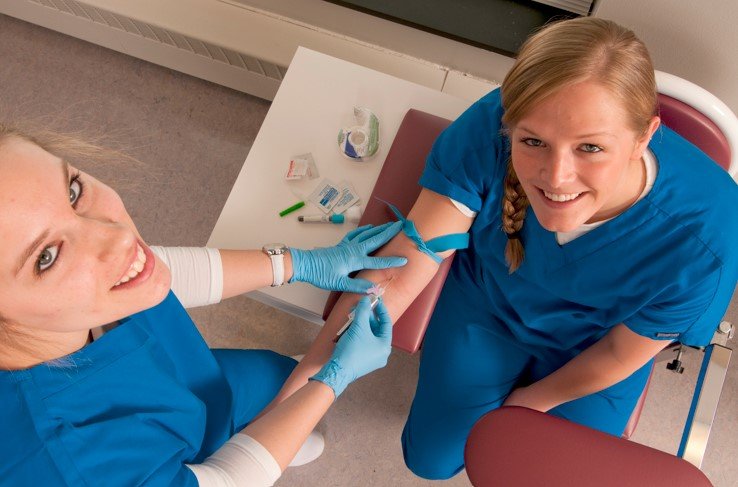Challenges and Strategies in Managing COVID-19 Vaccine Supply Chain for Hospitals in the United States
Summary
- Hospitals in the United States are facing challenges regarding the availability and Supply Chain management of Covid-19 vaccines.
- The distribution of vaccines is being prioritized based on risk factors and population demographics.
- Hospitals are implementing various strategies to efficiently manage the Supply Chain of vaccines and ensure equitable distribution.
Introduction
The Covid-19 pandemic has brought unprecedented challenges for hospitals across the United States. With the emergence of vaccines to combat the virus, hospitals are faced with the task of managing the availability and Supply Chain of Covid-19 vaccines. In this article, we will explore the current situation and strategies implemented by hospitals to ensure the efficient distribution of vaccines.
Availability of Covid-19 Vaccines
Since the approval of Covid-19 vaccines by the FDA, the distribution process has been in full swing across the country. However, challenges such as limited supply and logistical issues have hindered the availability of vaccines in hospitals. The distribution of vaccines is being prioritized based on risk factors and population demographics to ensure that those most vulnerable to the virus receive the vaccine first.
Allocation Strategies
Hospitals are working closely with federal and state health agencies to develop allocation strategies for Covid-19 vaccines. These strategies take into account factors such as population density, prevalence of the virus, and the capacity of healthcare facilities to administer the vaccine. By implementing these strategies, hospitals can ensure that vaccines are distributed equitably and efficiently.
Challenges in Availability
- Limited Vaccine Supply: The limited supply of Covid-19 vaccines has been a major challenge for hospitals. Many hospitals have faced delays in receiving vaccine shipments, leading to uncertainties in vaccination timelines.
- Logistical Issues: The logistics of storing and distributing vaccines at ultra-low temperatures have posed challenges for hospitals. Specialized equipment and training are required to handle and administer the vaccines safely.
- Equitable Distribution: Ensuring equitable distribution of vaccines has been a key priority for hospitals. Issues such as vaccine hesitancy and disparities in access to healthcare have made it challenging to reach vulnerable populations.
Supply Chain Management Strategy
To address the challenges in availability and distribution of Covid-19 vaccines, hospitals have implemented various Supply Chain management strategies. These strategies aim to optimize the allocation of vaccines, minimize waste, and ensure timely administration of doses.
Inventory Management
Hospitals are implementing advanced inventory management systems to track and monitor the availability of vaccines in real-time. By utilizing these systems, hospitals can optimize their vaccine Supply Chain and prevent stockouts or overages.
Collaboration with Partners
Hospitals are collaborating with various partners such as pharmacies, clinics, and local health departments to streamline the distribution process. By working together, these partners can share resources, information, and best practices to improve the efficiency of vaccine distribution.
Monitoring and Reporting
Monitoring and reporting systems are being used by hospitals to track the administration of vaccines and monitor the vaccine Supply Chain. These systems provide real-time data on vaccination rates, inventory levels, and logistical challenges, allowing hospitals to make informed decisions and adjustments as needed.
Conclusion
In conclusion, hospitals in the United States are facing challenges regarding the availability and Supply Chain management of Covid-19 vaccines. By implementing allocation strategies, inventory management systems, and collaboration with partners, hospitals can ensure the efficient distribution of vaccines and reach vulnerable populations. As the vaccination efforts continue, it is essential for hospitals to remain proactive and adapt to the evolving situation to ensure the successful containment of the virus.

Disclaimer: The content provided on this blog is for informational purposes only, reflecting the personal opinions and insights of the author(s) on the topics. The information provided should not be used for diagnosing or treating a health problem or disease, and those seeking personal medical advice should consult with a licensed physician. Always seek the advice of your doctor or other qualified health provider regarding a medical condition. Never disregard professional medical advice or delay in seeking it because of something you have read on this website. If you think you may have a medical emergency, call 911 or go to the nearest emergency room immediately. No physician-patient relationship is created by this web site or its use. No contributors to this web site make any representations, express or implied, with respect to the information provided herein or to its use. While we strive to share accurate and up-to-date information, we cannot guarantee the completeness, reliability, or accuracy of the content. The blog may also include links to external websites and resources for the convenience of our readers. Please note that linking to other sites does not imply endorsement of their content, practices, or services by us. Readers should use their discretion and judgment while exploring any external links and resources mentioned on this blog.

